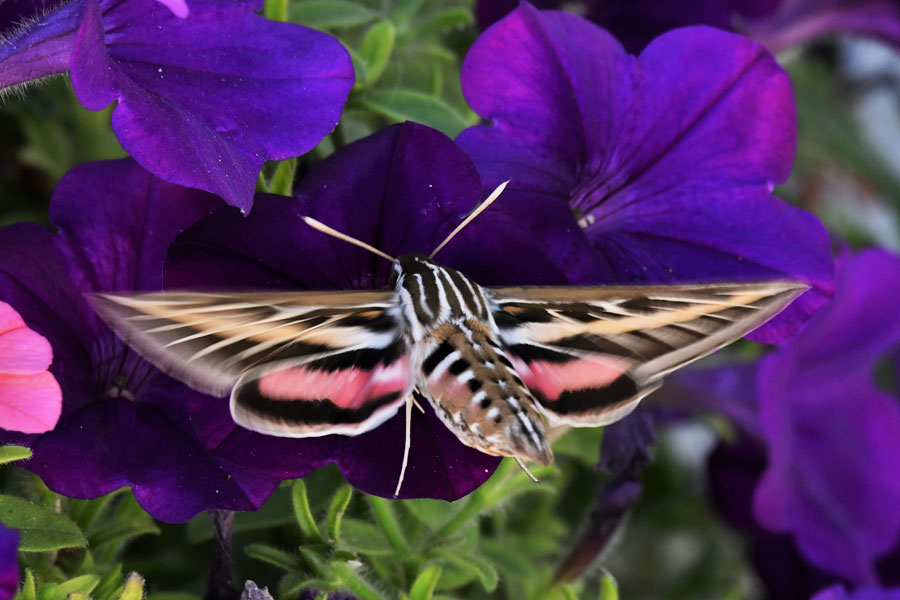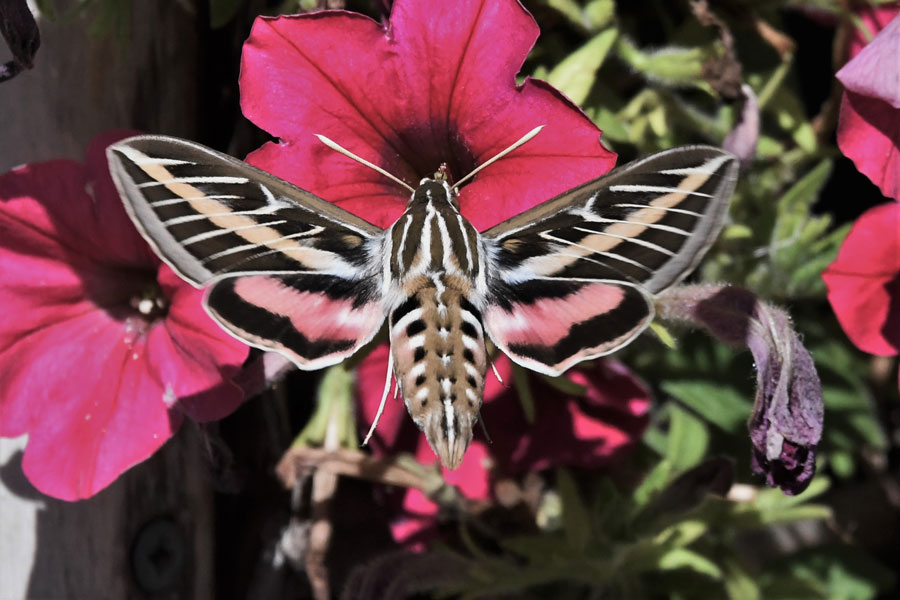An up-close look at hummingbird moths in eastern Idaho
Published at
As I stepped out of my back door to check my rock being cut, a movement in my wife’s petunia pot, caught my eye.
“A hummingbird,” I thought as it disappeared around the corner of the house. I followed it, but it was smaller and much quicker than a hummingbird.
I finally caught a good look at the little speed demon as it appeared to attack another pot of petunias and discovered what I grew up calling a “hummingbird moth.” In fact, it was a beautiful, White-lined sphinx moth feeding on the pink and purple petunias and was so busy, it kind of ignored me as I watched it.
I had tried and failed to get pictures of others in the past, but this one was so intent on feeding that I decided to try once again to capture its feeding. I sat up between two of the flowerpots that seemed to be its favorites but found it difficult to get pictures without the wings being blurred because of their speed.

While feeding, these moths steady themselves with their wings beating up to 85 beats per second, 35 beats faster than hummingbirds do. But I thought that if I could get about a thousand shots, one of them might successfully catch the wings between beats. My camera’s fastest shutter speed is eight/frames per second which is an eternity compared to the 85 beats of the insect. No matter what I did, the sideways shot was always blurred, but from the back I came close to catching the wings at a pause.
Their long tubular mouth, called a “proboscis,” probed the flowers for nectar and when flying from flower to flower was usually curled up, but not always. They are always in a hurry. While they are feeding during the day, they are usually feeding on bright-colored flowers, but when they feed at night or in low light, they are attracted to white ones.

Each female will lay about 250 eggs and when the eggs turn into caterpillars, they feed on plants, consuming a lot of leaves. These caterpillars are over an inch long with a “horn” on the anal end of it. When they are resting, they raise their head and resemble the Great Sphinx of Egypt they get their name from. After the caterpillar eats enough greenery, they bury themselves in the ground to pupate. They will spend the winter buried in the pupa stage and emerge in the spring to turn into the beautiful moth.
Idaho has at least eight subspecies of the Sphinx moth, I have only identified the White-lined one in my backyard. If you have some in your flower gardens, try to get some pictures of them; it will be an enjoyable or a frustrating challenge.
The Swainson’s hawks appear to be gathering for their migration to Costa Rica and other Central American countries. They have had a successful family producing summer in East Idaho where they have consumed thousands of rodents which helped the farmers. Get out and enjoy their gatherings. The predicted cooler weather is a welcome relief from the hot 12 weeks of summer.

Living the Wild Life is brought to you by The Healing Sanctuary.


